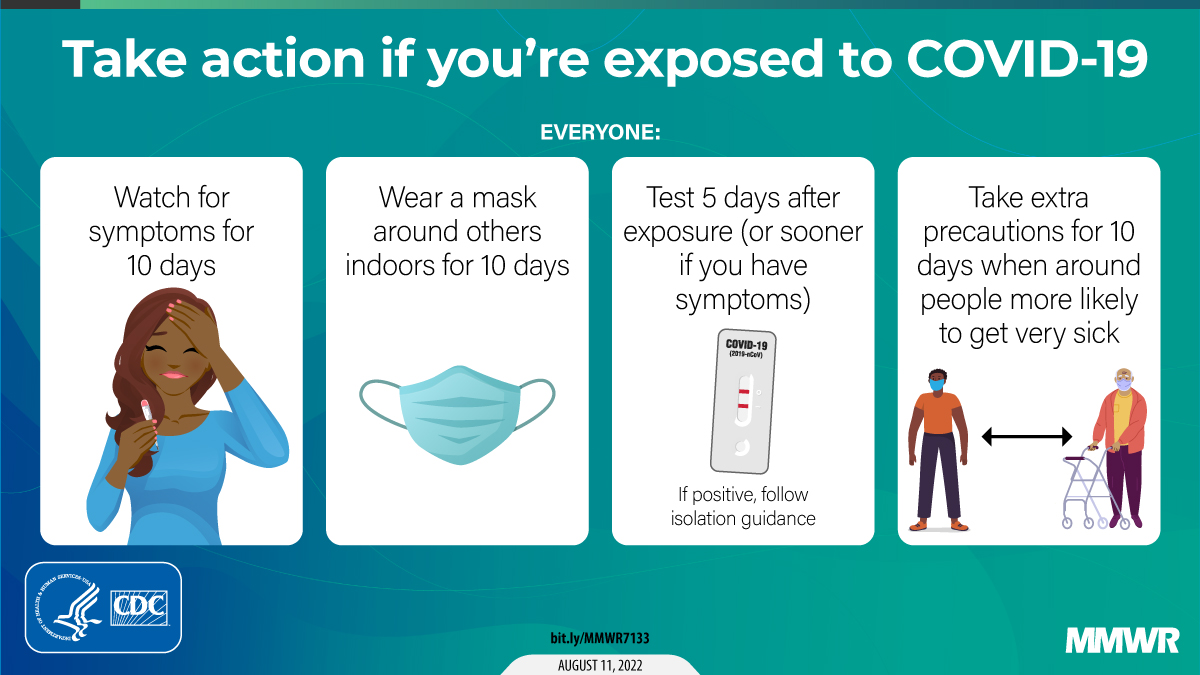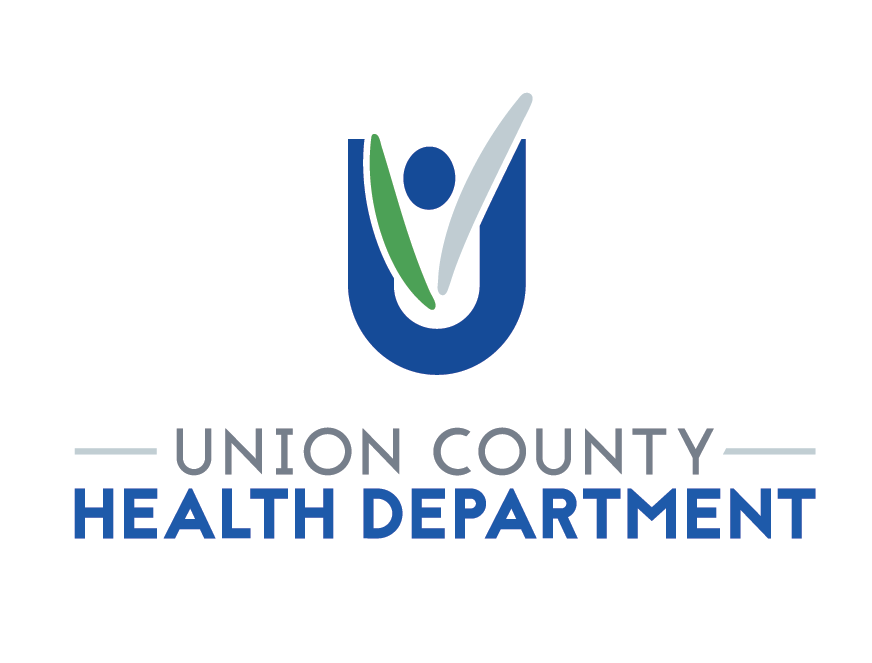- Watch for symptoms for 10 days
- Wear a mask around others indoors for 10 days. Start wearing a mask as soon as you learn you were exposed.
- Test 5 days after exposure, or sooner if you have symptoms
- If you test positive, follow isolation guidance
- Take extra precautions for 10 days when around people more likely to get very sick
When deciding how long to wear a mask and when to test:
- Day 0 is the day of your last exposure to someone with COVID-19
- Day 1 is the first full day after your last exposure
- Test once 5 days have passed since your last exposure
- Wear a mask from day 0 (or as soon as you become aware of exposure) through day 10
- If symptoms develop or you test positive, follow isolation guidance
Note: Masks are not recommended for children under ages 2 years, or for people with some disabilities. Other prevention actions (such as improving ventilation) should be used to avoid transmission during these 10 days.

How to Define Exposure
During high levels of disease activity within a community, it can be difficult to identify exposure as the virus is circulating significantly in the community. This make staying home if you are sick important in trying to limit exposure to others.
A known exposure is defined as having close contact with a person who has COVID-19. Close contact is defined as being within 6 feet of a person with COVID-19 for 15 or more minutes while the person is likely infectious. The infectious period for COVID-19 for most people includes the two days prior to symptoms beginning through 10 days after symptoms began.
People who are close contacts and considered exposed to COVID are typically other people who live in the home – spouse, children, or parents – with someone with COVID-19. Close contacts can also be a significant other, intimate partner, close friend or family member who a person with COVID-19 had close physical contact with (shared a hug, shared eating utensils, or sat close to one another). Think a friend who came over for dinner, a boyfriend/girlfriend, or a cousin the sick person frequently visits in-person. Close contacts can also be someone who works with, goes to school with, plays sports with, shares a car ride with, or attends church or bible study with someone with COVID-19. In these work, school, religious and social settings, close contacts are the people within 6 feet of a person with COVID-19 for 15+ minutes throughout the course of the day. It may not be everyone in the workplace, school, church, team, or gathering – but it is anyone who was within 6 feet of the ill person for 15+ minutes. When we assess whether we were within 6 feet of someone with COVID-19 for 15+ minutes throughout the day, we must look at the 2 days prior to when the person’s symptoms started (or if they have no symptoms – 2 days before a positive test specimen was collected) until about 10 days after their symptoms (or if they have no symptoms, 10 days after a positive test specimen was collected).


